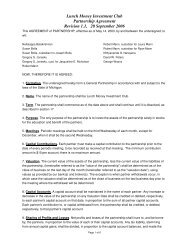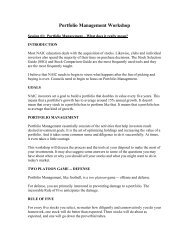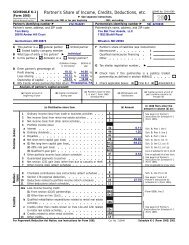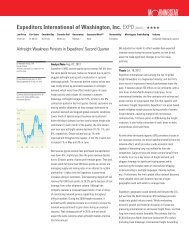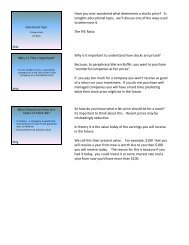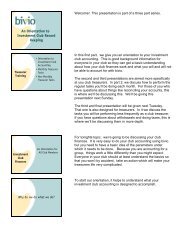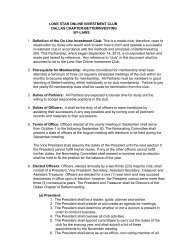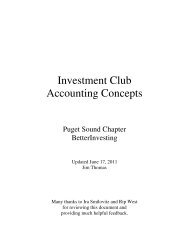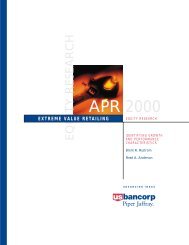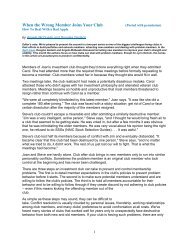Introduction Optional Reading Workshop Content - Bivio
Introduction Optional Reading Workshop Content - Bivio
Introduction Optional Reading Workshop Content - Bivio
You also want an ePaper? Increase the reach of your titles
YUMPU automatically turns print PDFs into web optimized ePapers that Google loves.
either or both can be an early warning signal. Pay particular attention to the TTMvalues relative to the past year or two.Next consider the Payables Period. Conventional wisdom is that higher values aredesirable for increasing cash flow. This is fine if the creditors agree to a slow pay policy.An important exception to this occurs when a company becomes short of cashbecause receivables and/or inventory are increasing. Then an increasing PayablesPeriod reinforces the warning signal given by increasing receivables and inventory.Look at the data for BBBY. Things look pretty good. There are no receivables. Days ofInventory has been relatively steady. Over time management has been taking longer topay bills. This is probably not a problem. Just make a mental note to check on this whenwe look at the Balance Sheet and Liquidity tomorrow.Look at the bottom of the table. It shows Asset Turnover that was discussed yesterday. Italso shows Fixed Asset Turnover; which has been more constant than Asset Turnover.Just make a mental note to look at this tomorrow.Finally, I want to reiterate that using the data in this table to track Inventory Turnover,Receivables Turnover and Payables Period can provide very useful warning signals.Also, it will be shown in Session 5 that these ratios are very important supplements to theCash Flow tables provided by both Morningstar and Reuters.Tomorrow we will look at Liquidity and Leverage.



